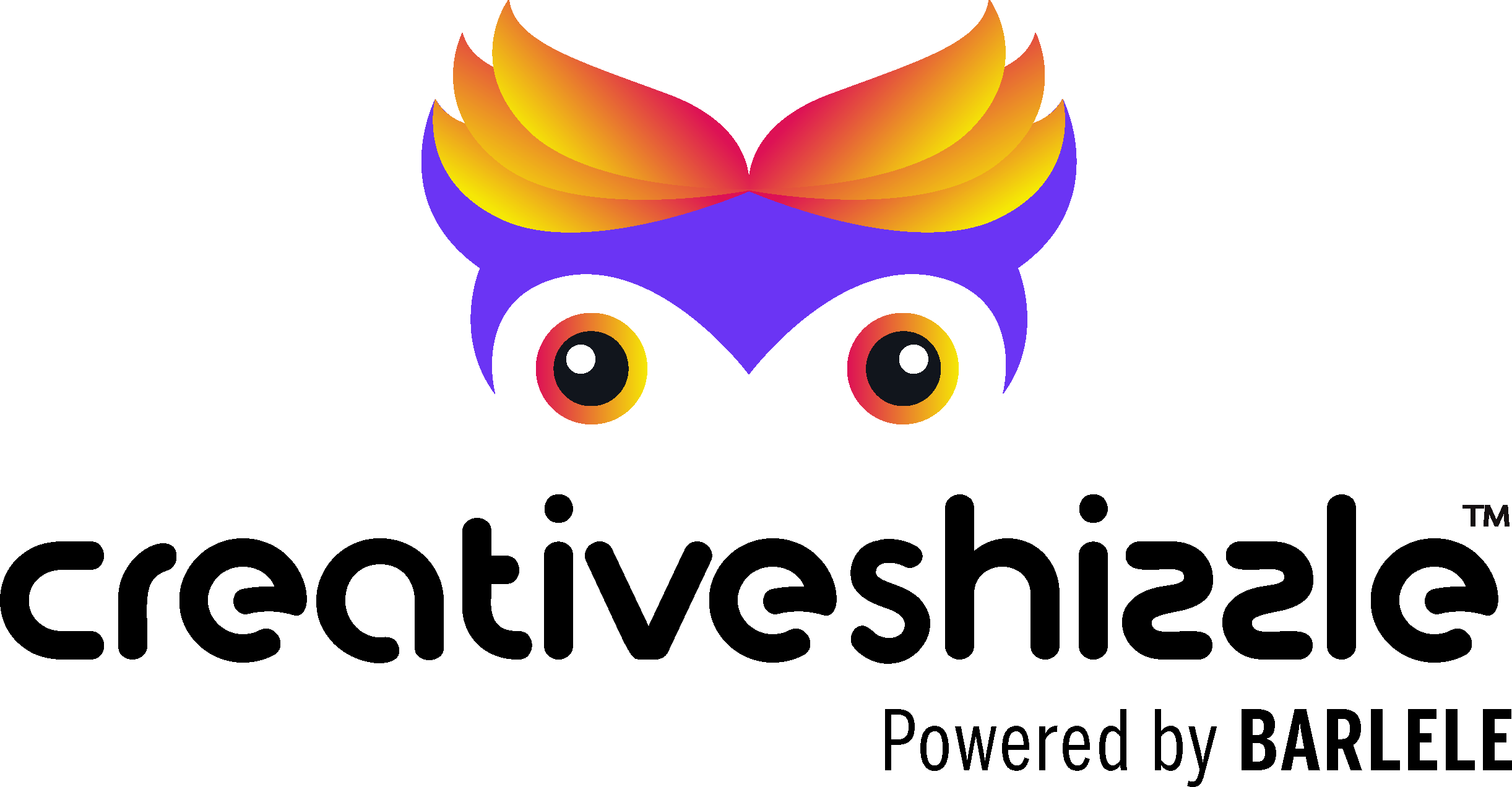Introduction
Businesses are embracing a dynamic marketing landscape that promises both challenges and unparalleled opportunities. In the ever-evolving digital age, staying ahead of the curve is no longer a luxury but a necessity for brands aiming to connect with their audience effectively. In this blog post, we will discuss 5 marketing trends that will shape the way businesses engage, captivate, and inspire their customers.
The fast-paced and interconnected nature of today’s world has transformed the way consumers interact with brands. Customers now demand personalized experiences, authenticity, and seamless engagement. As technology continues to evolve, marketing strategies are evolving with it. From harnessing the power of artificial intelligence to crafting compelling visual narratives through video marketing, businesses are poised to create extraordinary experiences that leave a lasting impact on their audience.
Personalization
Artificial Intelligence
Live Streaming
Content Marketing
Data-Driven Marketing
Personalization
Today’s consumers are no longer satisfied with generic marketing messages or one-size-fits-all approaches. Consumers are increasingly demanding personalized experiences from brands. Tailoring marketing messages and content to meet the individual interests and preferences of customers will be key to building lasting connections. By harnessing data and analytics, businesses can create targeted customer-centric approach campaigns that resonate with each customer, making them feel seen and valued.
The Power of Data-Driven Personalization
Data lies at the heart of effective personalization. By harnessing the vast pool of customer data, businesses can gain invaluable insights into individual behaviors, preferences, and purchasing patterns. From website interactions and social media engagements to previous purchases and customer feedback, every touchpoint offers a glimpse into what makes each customer tick.
There is a continued surge in the use of advanced data analytics tools to make sense of this data treasure trove. Machine learning algorithms will play a pivotal role in processing and interpreting customer data, enabling businesses to create tailored marketing strategies that resonate deeply with their target audience.
Hyper-Targeted Marketing Campaigns
One of the primary benefits of personalization is the ability to craft hyper-targeted marketing campaigns. By segmenting audiences based on their preferences, location, behavior, and demographics, businesses can deliver highly relevant content that speaks directly to individual needs.
Imagine receiving an email that not only addresses you by name but also recommends products or services based on your previous purchases and browsing history. Personalization needs to extend beyond the traditional “Hi [Name]” to offer a seamless and contextually relevant experience throughout the customer journey.
Creating Personalized Content
Content is the lifeblood of any marketing strategy, and personalization extends to this critical element as well. Businesses are investing in creating dynamic and personalized content that caters to specific customer segments. Tailored blog posts, product recommendations, and social media campaigns will be tailored to address the unique pain points and interests of each audience group.
Furthermore, interactive content will gain traction, providing customers with personalized quizzes, surveys, and assessments that offer customized insights and recommendations. Engaging in such content not only enhances the customer experience but also allows brands to gather additional data for even more personalized interactions.
Personalizing Customer Journey
In the past, customer journeys were often linear and predictable. Today, they are dynamic, fluid, and multi-channel. Businesses are focusing on mapping personalized customer journeys that take into account individual touchpoints and preferences.
From the first point of contact to post-purchase interactions, each step of the customer journey needs to be thoughtfully designed to provide a seamless and tailored experience. Personalization extends to all communication channels, including social media, chat support, email, and mobile apps, to ensure consistency and relevance.
The Role of AI in Personalization
Artificial Intelligence is a key enabler of advanced personalization in 2023. AI-powered tools can analyze vast amounts of data in real-time, enabling businesses to deliver personalized content and recommendations on the fly.
Chatbots, powered by AI, will become even more sophisticated, providing customers with instant and personalized assistance, whether they are browsing a website, making a purchase, or seeking product information. AI-driven chatbots will learn from customer interactions over time, becoming more adept at anticipating and fulfilling individual needs.
Building Customer Trust through Personalization
While personalization offers immense opportunities, it also raises concerns about data privacy and security. Businesses must strike a delicate balance between personalized experiences and safeguarding customer data. Transparency and consent will be at the forefront of data-driven marketing. Customers will appreciate businesses that are upfront about data collection and use, earning their trust by delivering personalized experiences while respecting their privacy preferences.
Artificial Intelligence (AI)
Artificial Intelligence (AI) has emerged as a transformative force that is reshaping the marketing landscape in profound ways. AI-driven innovations will play an increasingly significant role in how businesses interact with customers, make data-driven decisions, and streamline marketing processes. This era of intelligent marketing holds the promise of enhancing customer experiences, optimizing campaigns, and driving business growth.
AI-Powered Customer Interactions
Businesses are witnessing a surge in AI-powered customer interactions that deliver seamless, personalized experiences. Chatbots and virtual assistants will become more sophisticated, responding to customer queries in real-time and offering tailored support. AI-driven chatbots will not only provide immediate responses but also learn from past interactions to continuously improve their problem-solving capabilities. Moreover, Natural Language Processing (NLP) advancements will enable AI systems to understand and process human language better. This means customers can engage in more natural conversations with AI interfaces, making interactions feel less automated and more human-like.
Predictive Analytics for Enhanced Customer Insights
The ability to predict customer behavior accurately is a game-changer for businesses. AI-driven predictive analytics analyzes vast datasets to identify trends, patterns, and customer preferences. This invaluable data will empower marketers to anticipate customer needs, identify potential churn, and tailor marketing campaigns with unparalleled precision.
Through AI-powered predictive analytics, businesses can gain actionable insights into the most effective marketing channels, optimal times for reaching customers, and the types of content that resonate most with specific segments. Armed with these insights, marketers can allocate resources more efficiently, resulting in improved ROI on marketing investments.
Hyper-Personalization and Recommendation Engines
AI enables businesses to achieve new heights of personalization by delivering content and product recommendations tailored to individual customer preferences. Recommendation engines powered by AI will analyze historical customer data and behavior to provide personalized product suggestions and content recommendations. Customers are experiencing more intuitive shopping experiences as AI-driven recommendation engines offer products that align with their interests and previous purchases. This level of hyper-personalization will not only increase customer satisfaction but also drive higher conversion rates and customer loyalty.
Automating Marketing Workflows
AI is able to streamline and automate various marketing tasks, liberating marketers from repetitive processes and enabling them to focus on high-level strategies. AI-driven automation is capable of managing email marketing campaigns, social media posts, and content distribution with greater efficiency. Automated marketing workflows will also optimize ad placements, helping businesses achieve better targeting and ad performance. As AI becomes more integrated into marketing platforms, businesses will witness significant time and cost savings, allowing teams to be more agile and responsive.
Embracing AI for Enhanced Data Analytics
In the digital age, data is the lifeblood of successful marketing. AI will revolutionize data analytics, enabling businesses to process and analyze vast amounts of information in real-time. In 2023, AI-powered data analytics will uncover valuable insights that were previously buried in data silos.
AI-driven analytics will not only present meaningful data but also interpret trends and correlations, empowering marketers to make data-driven decisions quickly and confidently. By identifying untapped opportunities and potential challenges, AI will inform marketing strategies, helping businesses stay ahead of the competition.
Ethics and Transparency in AI Usage
While AI offers a myriad of advantages, businesses must be mindful of the ethical considerations surrounding its implementation. Responsible AI usage will be a crucial aspect of intelligent marketing. Businesses will prioritize transparency and data privacy, ensuring that customer information is used ethically and with full consent.
Live Streaming
The popularity of live streaming continues to be on the rise, and businesses are leveraging this trend to connect with their audience in real-time. Live streaming allows brands to showcase events, conduct Q&A sessions, and provide exclusive access, fostering a sense of community and trust with customers. In an era defined by instant connectivity, live streaming has emerged as a powerful tool for businesses to create real-time connections with their audience.
The Rise of Live Streaming
Live streaming has witnessed explosive growth in recent years, and its momentum shows no signs of slowing down. Businesses are embracing live streaming as a dynamic and interactive medium to communicate directly with their audience. Platforms like Facebook Live, Instagram Live, YouTube Live, and Twitch have democratized live streaming, enabling brands of all sizes to leverage this captivating format.
Real-Time Interaction and Engagement
What sets live streaming apart from pre-recorded content is its inherent sense of immediacy and authenticity. Businesses harness the power of live streaming to connect with their audience in real-time, making them feel like valued participants rather than passive viewers.
Whether hosting Q&A sessions, product launches, behind-the-scenes glimpses, or live events, brands can establish a direct line of communication with their customers. Live chat features further enhance engagement, allowing viewers to ask questions, provide feedback, and share their thoughts during the broadcast. This instant feedback loop not only fosters a sense of community but also offers businesses valuable insights into their audience’s preferences and pain points.
Building Trust and Transparency
Authenticity and transparency are prized attributes in the digital age, and live streaming enables businesses to embody these qualities genuinely. By sharing unscripted, real-time moments, brands can humanize their image and build a deeper emotional connection with their audience.
Live streaming is a vital platform for showcasing a brand’s culture, values, and behind-the-scenes operations. Brands can give customers an inside look at their team, manufacturing process, or charitable initiatives, fostering a sense of trust and loyalty among their followers. This heightened transparency can be a powerful differentiator, setting businesses apart from competitors that rely solely on polished and scripted content.
Expanding Audience Reach
Live streaming transcends geographical barriers, enabling businesses to reach a global audience effortlessly. Brands are using live streaming to expand their market reach and engage with potential customers from around the world. Additionally, live streaming encourages social sharing, leading to increased organic reach. Viewers who find value in the live stream are more likely to share it with their networks, amplifying the brand’s message and attracting new followers. Savvy businesses will capitalize on this virality by optimizing their live streams for various platforms and tailoring content for different audience segments.
Event Amplification and Engagement
Businesses leverage live streaming to amplify the impact of physical events, such as conferences, product launches, and trade shows. Live streaming enables brands to transcend the limitations of physical space and invite a global audience to participate virtually.
Moreover, live streaming makes events more inclusive and accessible. Viewers who cannot attend in person due to geographical or logistical constraints can still be part of the experience. By incorporating live Q&A sessions and interactive elements, brands can bridge the gap between online and offline attendees, creating a cohesive and engaging event atmosphere.
Content Repurposing and Evergreen Value
The value of live streaming extends beyond the initial broadcast. Businesses recognize the potential for repurposing live stream content for evergreen use. Recorded live streams can be edited into shorter clips or highlight reels, transforming them into shareable and engaging content for social media and other platforms.
Moreover, businesses can turn live streams into on-demand content, building a library of educational and entertaining videos that continue to attract views long after the live event has ended. This content strategy maximizes the value of live streaming investments and keeps audiences engaged with a brand’s offerings over time.
Content Marketing
Content marketing remains a steadfast strategy for businesses seeking to attract, engage, and retain customers. Content is the foundation upon which successful marketing campaigns are built, enabling brands to tell their stories, showcase their expertise, and connect with their audience on a deeper level. By providing value through content, brands can establish themselves as industry leaders and foster brand loyalty.
Diversification of Content Formats
The content landscape has seen a significant diversification of formats beyond traditional blog posts and articles. Businesses embrace a plethora of content formats to cater to diverse audience preferences and consumption habits. Video content, infographics, podcasts, interactive quizzes, webinars, and live streaming take center stage, offering engaging and multi-dimensional experiences for consumers.
Video Marketing Dominance
The rise of video marketing is a key driver in today’s content landscape. Video has proven to be a highly effective medium for conveying information, eliciting emotions, and driving customer action. Brands leverage video to tell compelling stories, showcase product demonstrations, and share behind-the-scenes glimpses of their operations.
Short-form videos, such as those popular on TikTok and Instagram Reels, continue to captivate younger audiences. Additionally, long-form videos, such as webinars and explainer videos, cater to consumers seeking in-depth insights and value-driven content.
Interactive and Immersive Content
Content marketing takes interactivity to new heights. Businesses leverage interactive content to foster engagement and provide personalized experiences to their audience. Interactive quizzes, polls, assessments, and virtual reality experiences have become staples in content strategies, encouraging active participation and offering valuable insights into consumer preferences.
This immersive approach not only boosts audience retention but also creates memorable brand interactions, increasing the likelihood of brand recall and advocacy. In an age where attention spans are fleeting, interactive content is a powerful tool to stand out amidst the noise and captivate consumers.
User-Generated Content (UGC) as a Trust-Building Tool
User-Generated Content (UGC) continues to hold immense value in content marketing. Brands recognize the power of authentic content created by their customers and advocates. UGC not only fosters trust and credibility but also enables brands to tap into the creativity and passion of their loyal followers.
Businesses are actively encouraging customers to generate content through contests, challenges, and branded hashtags. Sharing UGC on social media and other platforms strengthens the sense of community around the brand, amplifying its reach and establishing an emotional connection with potential customers.
Personalization and Segmentation
Businesses harness the power of personalization to deliver tailored content experiences to their audience. By segmenting their audience based on demographics, behavior, and preferences, brands can craft targeted content that addresses specific pain points and interests. Dynamic content is more prevalent, allowing businesses to deliver personalized messages and recommendations based on real-time interactions. This level of personalization enhances the customer experience, deepens engagement, and ultimately drives conversion rates.
Emphasis on Quality and Value
As the content landscape becomes more saturated, quality and value is paramount. Businesses need to prioritize creating high-quality, informative, and entertaining content that resonates with their audience. Rather than focusing solely on quantity, brands should be investing in content that delivers genuine value, positioning themselves as trusted authorities in their respective industries.
Long-form, in-depth articles and pillar content are essential for establishing thought leadership and building comprehensive resources that cater to the needs of customers. By providing value-rich content, brands can build loyalty, nurture long-term relationships, and establish themselves as reliable sources of information.
SEO-Centric Content Strategies
Search Engine Optimization (SEO) continues to be a foundational element of content marketing. Brands will create content with SEO in mind, ensuring that their articles, videos, and other content assets are discoverable and rank well on search engine results pages. Featured snippets, voice search optimization, and mobile-friendly content are key areas of focus to adapt to the evolving search landscape.
Data-Driven Marketing
Data-driven marketing is becoming increasingly critical as businesses collect vast amounts of customer data. Leveraging data analytics is essential to gain insights into customer behavior, preferences, and pain points. By harnessing the vast sea of data available, businesses can make informed decisions, deliver personalized experiences, and create campaigns that resonate with their target audience like never before.
Understanding the Customer Journey
At the heart of data-driven marketing lies the customer journey – the path a customer takes from initial awareness to making a purchase and beyond. Businesses are using data to gain a comprehensive understanding of this journey, identifying touchpoints and interactions that influence customer decisions.
Analytics tools track customer behavior across various channels, including website visits, social media engagement, email interactions, and app usage. This holistic view enables businesses to identify pain points and opportunities for improvement, ensuring a seamless and cohesive customer experience throughout the entire journey.
Leveraging Customer Segmentation
Businesses need to embrace customer segmentation to divide their audience into distinct groups based on shared characteristics, interests, and behaviors. Data-driven segmentation allows businesses to tailor marketing efforts to specific segments, delivering personalized content that resonates with each group. Segmentation is now going beyond basic demographic factors and delving into more nuanced attributes, such as customer preferences, purchase history, and engagement patterns. By understanding the unique needs of each segment, businesses can create targeted marketing campaigns that maximize relevance and engagement.
Predictive Analytics for Anticipating Customer Needs
One of the most powerful applications of data-driven marketing is predictive analytics. Businesses leverage predictive models to anticipate customer behavior and needs, providing proactive solutions and personalized recommendations. Predictive analytics uses historical data and machine learning algorithms to forecast future outcomes. This enables businesses to predict customer churn, identify cross-selling opportunities, and anticipate customer preferences, enabling them to be one step ahead in meeting customer demands.
Optimizing Marketing Campaigns
Data-driven marketing allows businesses to continually optimize their marketing campaigns for better performance and ROI. A/B testing and multivariate testing will be crucial components of marketing strategies, enabling businesses to experiment with different variables and determine the most effective combinations. Marketers are using data insights to fine-tune their messaging, creatives, and targeting parameters. This iterative approach allows businesses to continuously improve their campaigns, ensuring they resonate with the right audience, at the right time, and through the right channels.
Attribution Modeling for Accurate Insights
In the complex digital landscape, attribution modeling is a vital tool for businesses to understand the impact of each marketing touchpoint on the customer journey. Attribution models analyze data to determine which marketing channels and campaigns contributed to a specific conversion or action.
By accurately attributing credit to various marketing efforts, businesses can allocate their marketing budgets more effectively, focusing on the channels and campaigns that drive the highest returns. This data-driven approach optimizes resource allocation and allows businesses to maximize their marketing efforts.
Improving Customer Personalization
Data-driven marketing is instrumental in elevating customer personalization to new heights. Businesses are using data to create dynamic and personalized content, offers, and recommendations that cater to individual customer preferences. Whether its customizing email campaigns based on browsing behavior or providing personalized product recommendations, data-driven personalization enhances the customer experience, leading to higher engagement and conversion rates.
Privacy and Ethical Considerations
As data-driven marketing becomes more sophisticated, businesses must prioritize data privacy and ethical use of customer information. Regulations like the General Data Protection Regulation (GDPR) and the California Consumer Privacy Act (CCPA) continue to shape data collection and usage practices.
To build and maintain customer trust, businesses must be transparent about data collection, seek explicit consent, and provide customers with options to control their data. Ethical data practices will be integral to data-driven marketing strategies, ensuring that businesses deliver personalized experiences while respecting customer privacy.
Conclusion
To thrive in the ever-changing marketing landscape, businesses must embrace these trends and adopt a customer-centric approach. By staying attuned to consumer preferences and leveraging innovative strategies, brands can create meaningful connections and stand out in a competitive market.







